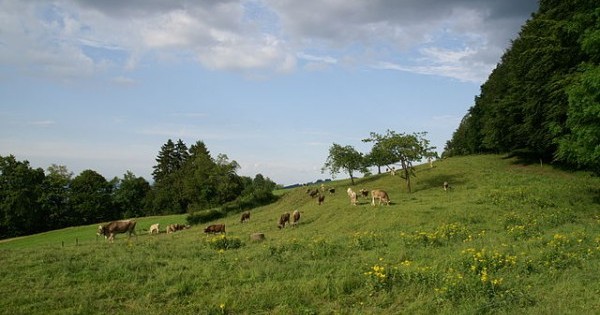
“Drink your milk!” my mother always used to say. And we did. Over the years we five children drank it by the megagallons. There was no lack of milk: we lived on the 350-acre commercial dairy farm my father managed. Located on Comegys Bight on the Chester River on the Eastern Shore of Maryland, its herd comprised 100 cows, 60 milking. We never questioned drinking milk. Everybody drank it. For us, it was free, and we didn’t have much spare change. Fortunately, we were lactose tolerant.
Mammals are by definition born lactose tolerant. Mother mammals produce milk and suckle their little ones. The little ones are lactose tolerant (except in the rare case of a genetic disorder), lactose being the complex sugar found in milk.
We humans have a gene on chromosome 2, the lactase gene (LCT) that expresses the protein lactase, an enzyme that breaks down lactose into smaller sugars—glucose and galactose—which the blood then absorbs. Cells lining the walls of the small intestine produce lactase.
But normally or at least originally the lactase gene shuts off at weaning time, age 4 or 5. Milk becomes indigestible (producing intolerable flatulence, bloating, and diarrhea). In the old days, all adult Homo sapiens were lactose intolerant.
Remarkably, lactose tolerance in adults, properly known as lactase persistence, evolved 7,000 to 10,000 years ago in populations that domesticated cattle and goats (and drank their milk). Lactase persistence evolved in Europe to such an extent that today 70 to 80 percent of persons of European extraction (including me) are lactase persistent. It also evolved in certain pastoral populations in Africa and in the Middle East. We can drink milk as adults. Most other folks are lactose intolerant, the original Homo sapiens condition.
Evolution via natural selection involves genes. So what is a gene? A gene is nothing more than a run of base pairs—those famous A-T and C-G pairs—in the DNA, a run that does something, that expresses a protein or regulates the expression of a protein. The lactase gene, LCT, has more than 49,000 base pairs. The transformation to lactose tolerance in adulthood came about through a mutation in one or more of these base pairs, different ones, actually, for Europeans and Africans, a case of convergent evolution. So beneficial, in those ancient times, was this adult-persistent lactose tolerance that those who had it, and their children who had it, and their children’s children who had it, survived to the point that most people in those populations today are descended from them.
Rapid evolution by natural selection? Yes. A study of the extant genes in eight Neolithic skeletons (5,000 to 5,800 years old) and one Mesolithic skeleton (4,000 years old), all European, found no allele (a gene variant that has a few base-pair differences) for lactase persistence. Another study of 10 Neolithic Scandinavian skeletons found the allele for lactase persistence in only 5 percent of the skeletons versus 74 percent of the present Swedish population. For those ancient agriculturalists, adult lactose tolerance must somehow have become critical for survival.
Toward cows I feel a certain kindness. I remember them as big, chuffing, calm, maternal animals. They mainly chewed cud and switched their tails against the horseflies. They liked to be milked. As a child I helped my father do the milking and I myself owned two different Holstein calves. I now like to think that I was continuing an old human-bovine connection, one begun by the world’s first farmers. Along the way, our bodies gave us a new way to survive.

